Melbourne’s City Circle tram route is a 1990s invention, but the trams that run the Number 35 route are all vintage 1920s and 1930s and the line takes you past some wonderful vintage structures
My experience on the City Circle tram
The vintage trams on Melbourne’s City Circle line are almost an icon of the State capital for visitors. The route, a kind of Q shape around Melbourne’s CBD, but adding in the Docklands to form the tail of the Q, is a 1990s invention, but the trams they use on the route are all from the W-class, a generation of trams which first saw the light of day in 1923.
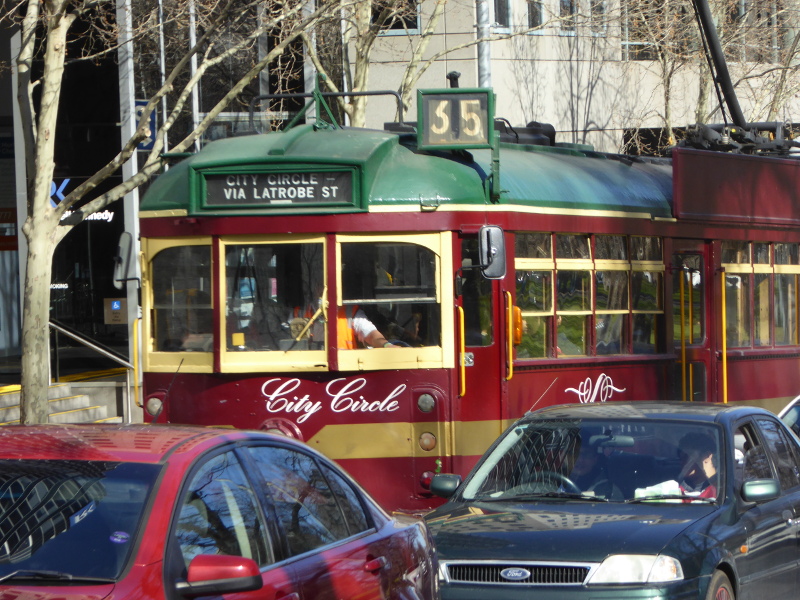
It was a cold, wet day when I turned up at Flinders Street station to catch this free service, so I had to share the seating space with a whole bunch of tourists looking to escape the wet. I got lucky with my seat, but one stop later, it was standing room only.
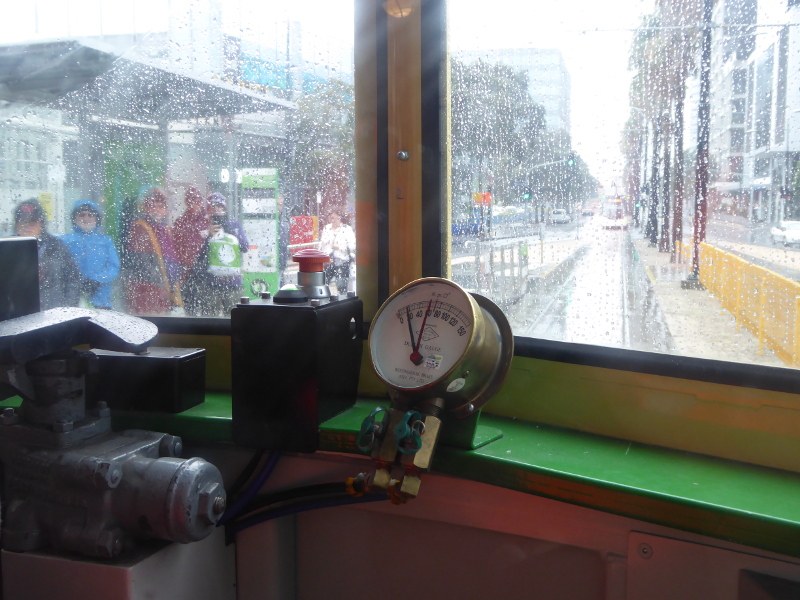
Part of the problem, a Yarra Trams official told me as I waited under the shelter at the stop, is that the old vintage trams don’t cope so well in the rain, so they only had three in total on the line that morning, meaning it was every half hour anti-clockwise and only one an hour clockwise.
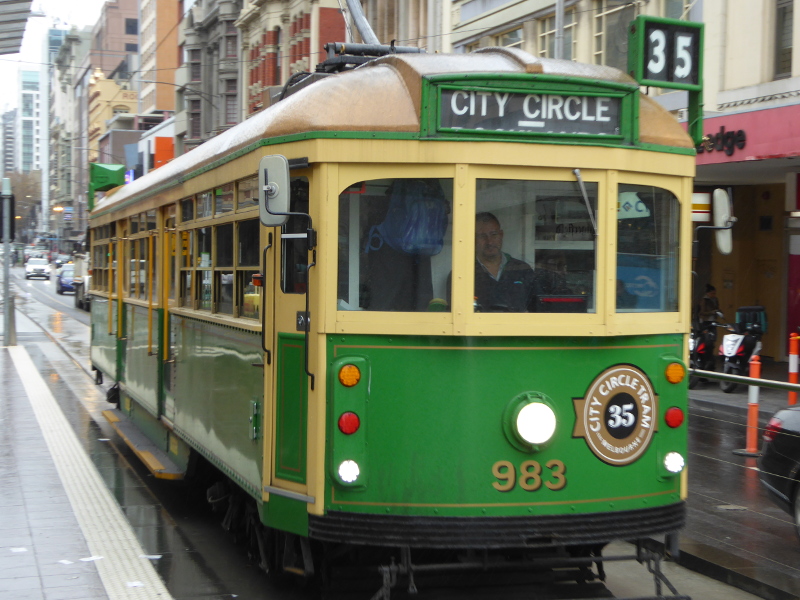
I love these old trams, and I am so pleased that they have a bunch of them up in Bendigo getting restored for future use on the City Circle. They have beautiful wooden fittings, window clips that remind me of trains in my youth, and old straps to hang onto (though the ones in our tram were plastic instead of what once must have been leather).
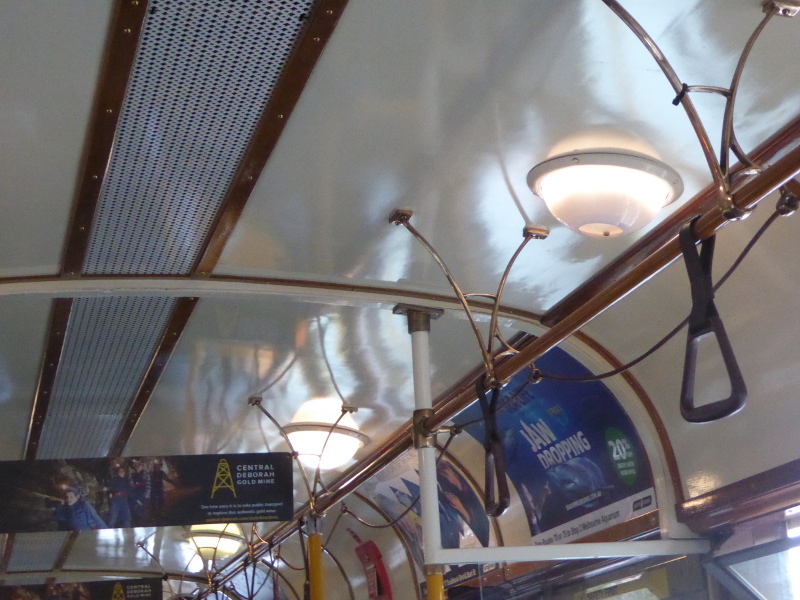
Another blogger I link to below complains that the running commentary on the City Circle is a bit like those annoying ads on local radio stations, with basically a stream of suggestions of places to go as a tourist if you get off at each stop. As that same blogger acknowledges, though, this service is free, and I guess they have to finance it somehow, with tourist destinations probably paying for the chance to get a mention on the commentary.
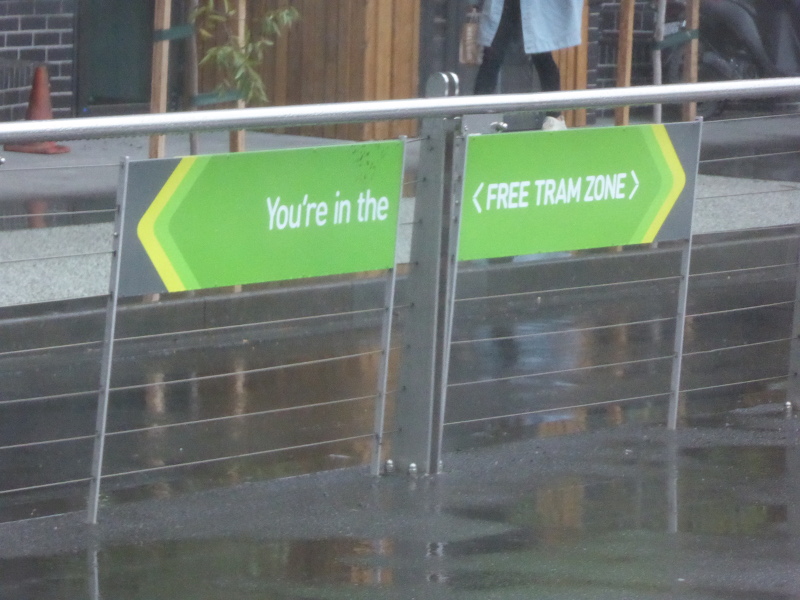
So I decided to make my own blog entry on the Number 35 tram route a catalogue of the vintage buildings that caught my eye as we trundled round – and only a couple of these even got a mention on that commentary tape…
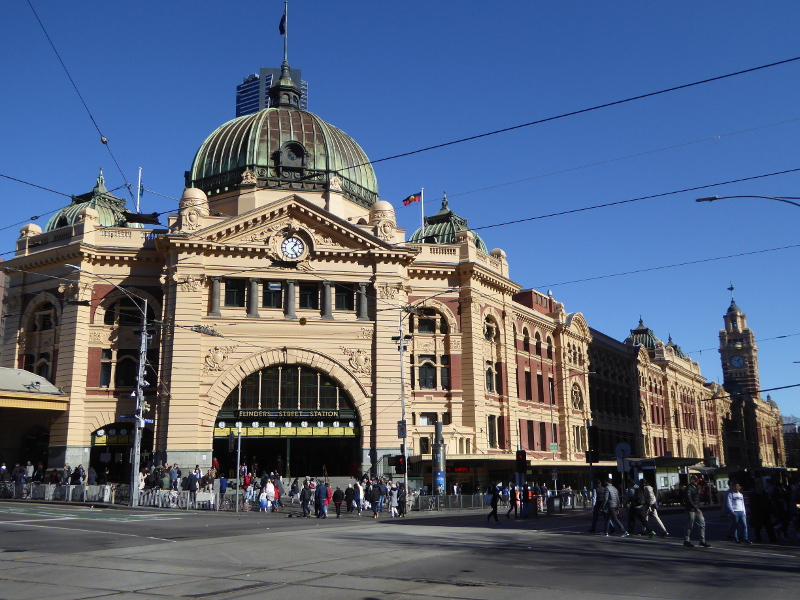
Flinders Street station is of course a magnificent starting point. Surely this must once have been Melbourne’s main railway hub, instead of the modern monstrosity that is Southern Cross (formerly Spencer Street), or the strangely named Melbourne Central, which seems so quiet compared to its big sisters. And a picture of the Number 35 tram cruising past Flinders St station is a must for many visitors compiling a photo log of their trip to Melbourne.
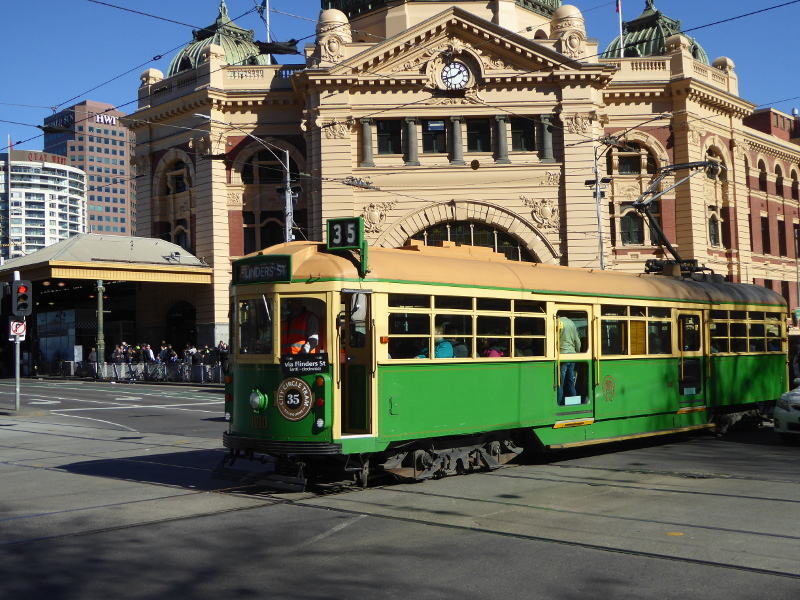
But as I waited with my back to Flinders Street, I looked up and saw what I think they call ‘ghost signage’ high up on a brick wall a block or two from Flinders Street. “Bible House” reads the big white script.
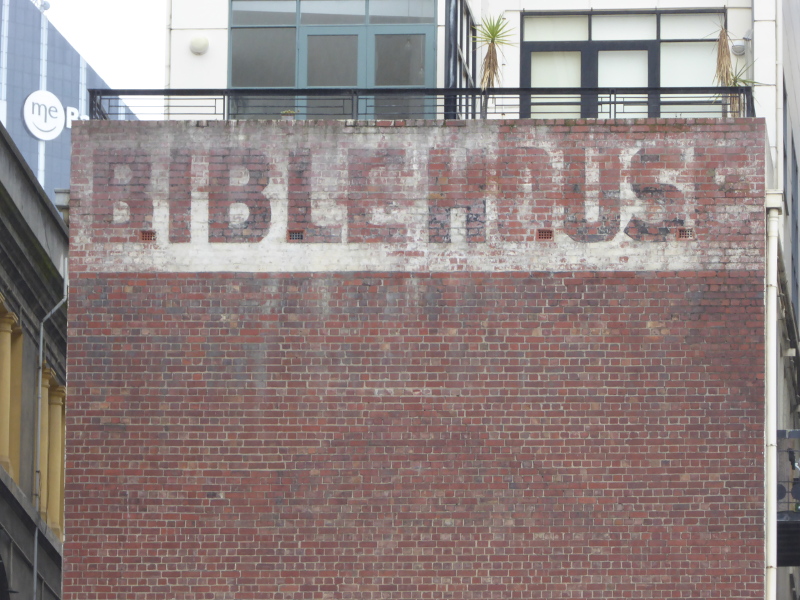
A quick search when I got home revealed that this was the home of the “British & Foreign Bible Society”, which bought this building back in 1910. I’ve no idea what this group used to do or when it stopped operating, but I couldn’t help wondering if Mr Biggs (from my St Kilda Pier stories) came here on his fateful visit in 1929?
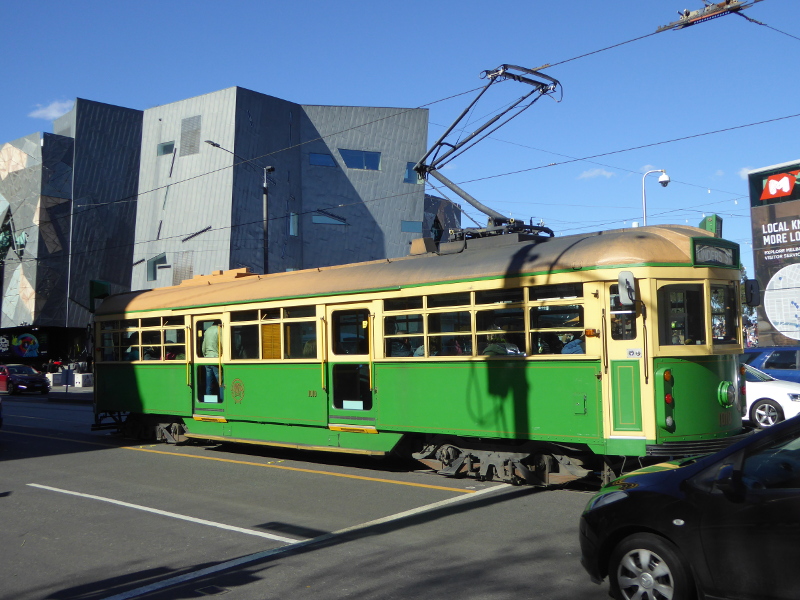
On the right as the tram gets moving away from Flinders St Station is Federation Square, with its hotch-potch of mostly modern buildings. Across the road on the left is the splendid Forum Theatre, which catered for an enormous 3,300+ cinema audience when it first opened its doors, also in 1929. It doesn’t show many films these days, but it does occasionally, so may well qualify for a Vintage Victoria entry one day.
As we curve round to the left, Treasury Gardens appear on the right, with Fitzroy Gardens beyond them. These get a mention on the commentary, but mostly as a reason to get off and see Captain Cook’s Cottage (funnily enough I have been to the spot back in North Yorkshire from which this cottage was removed – it has a slightly odd plinth there in its place now).
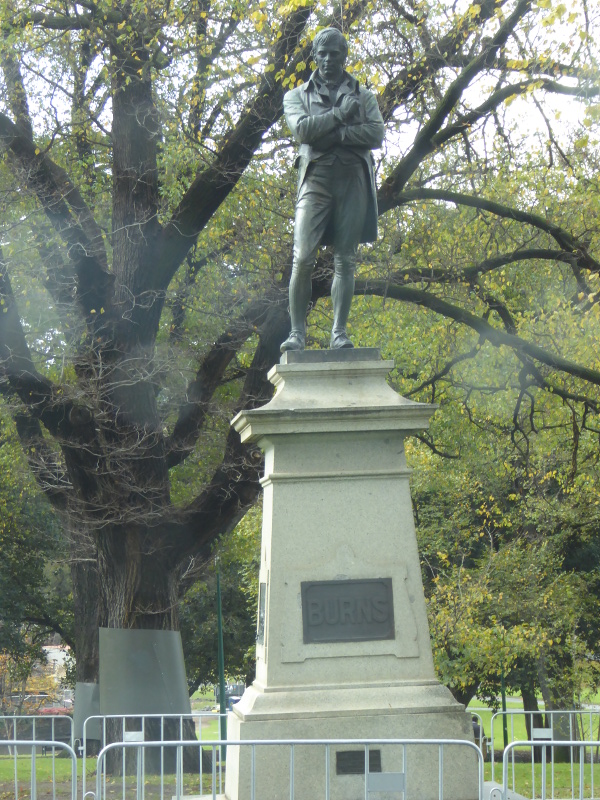
I was more struck by the Robert Burns statue, which is one of a dozen or so across Australia put in place by ex-pat Scots who hankered after the hero of their homeland.
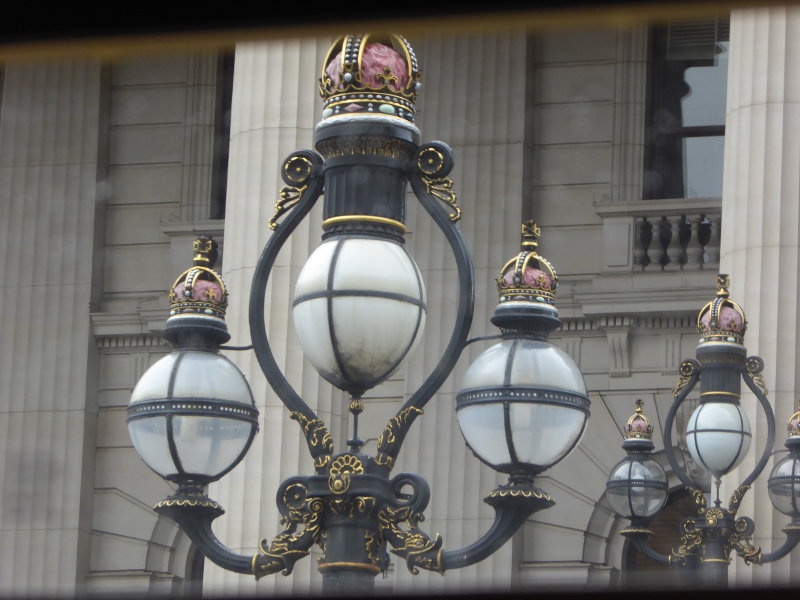
The old treasury building on the right is really impressive, as is the Parliament House building, which had a nice line in vintage lamps all around the front staircases.
The tram stops here for five minutes, and apparently in good weather couples get out here to have their pictures taken on the steps – but there were no takers on this rainy Melbourne morning.
The Princess Theatre appears next, on the left side, and beside it the entrance to Chinatown. These get a brief mention on the commentary, but I rather liked the fact that the theatre first opened as an equestrian amphitheatre in the 1850s. Sadly, it won’t make Vintage Victoria, as they don’t show films there, and never have as far as I can see.
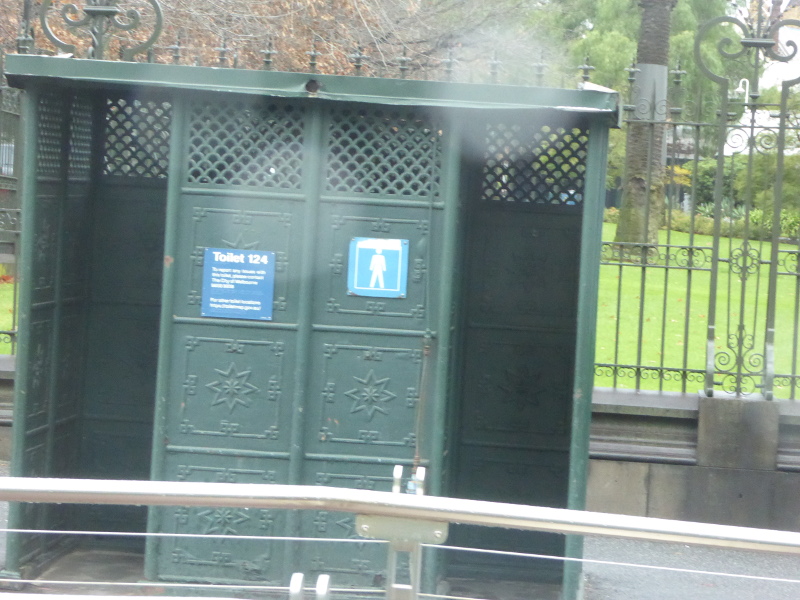
The vintage toilets on the right remind me of Paris urinals, and similar loos in Brussels. I have no idea what vintage these would be, but there are more from the same era around in Latrobe Street near the RMIT building too.
The Royal Australasian College of Surgeons caught my eye next. This 1935 building stands alone to the left of the tram route but got no mention again from the commentary – I guess it’s not really the kind of place the general public will be visiting, but still stands as a wonderful landmark and is still used for its original purpose 84 years on.
Next, we swung round a corner into Latrobe Street, where we met the clockwise 35. There was the traditional wave of one driver to another, and it reminded me that my granddad must have driven a tram of about this Vintage in the 1930s and probably weaved at other passing drivers on the Southampton trams routes.
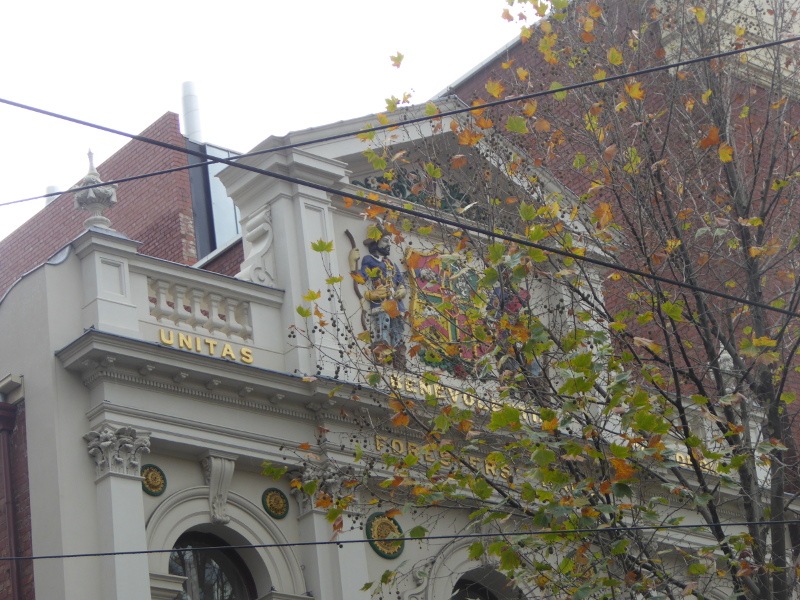
The start of Latrobe St has largely modern builds, until you reach the stretch of property now owned by the RMIT university. They’ve expanded so much that they now occupy buildings that used to be the Magistrates Court, and the rather decorative Foresters Hall.
And just before you get there, don’t miss the old Police HQ at Russell Street. It’s no longer Melbourne’s main police station but it featured in many of the criminal cases my Vintage Victoria blog has referred to, so I had to get out and get a pic. It’s also a rather attractive art deco building in its own right.
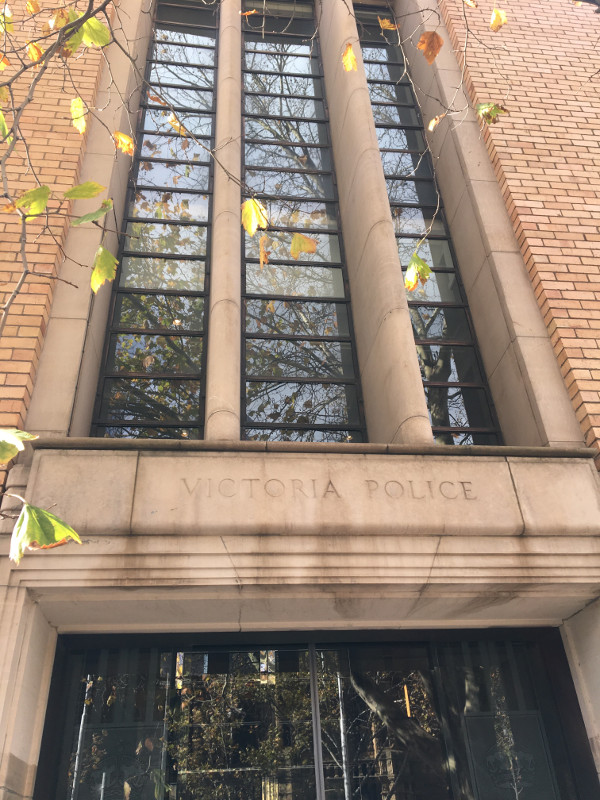
The massive metro tunnel works means that cranes and diggers are all we see for a while along LaTrobe Street – reminding me also of how such massive infrastructure projects can mean the downfall of vintage places like Campbell Arcade, back near Flinders Street Station.
Thankfully all these building works have left the Welsh Church intact still. This 1871 build was needed back then to cater for all the arriving Welsh miners, who had come to Victoria looking to turn their skills in mining ‘black gold’ to good use in making a fortune in the Goldfields.
A long, tall, brick wall looms next on the left side of the tram: This is the old Mint building, which transferred all its coin making work to Canberra in 1969. The Mint is a restaurant now!
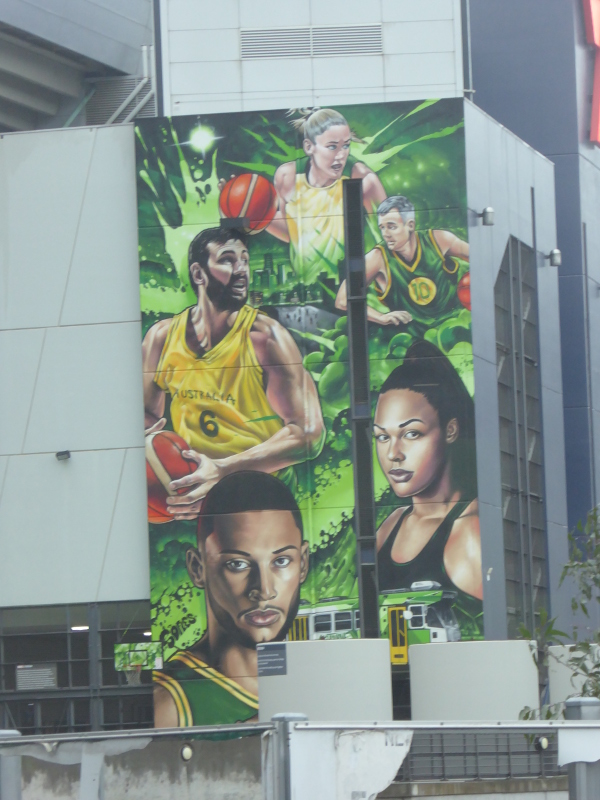
The tram then leaves the CBD and heads towards Docklands. But first on the left is the super-modern Marvel stadium, which hosts all sorts of big matches with various shaped balls. Funnily enough, not long ago this was called the Etihad Stadium, and they haven’t yet got around to changing the name of the tram stop signs, which still read Etihad. But then, in these days of corporate sponsorship, is it worth changing them, since it’ll probably be called something else in a couple of years…
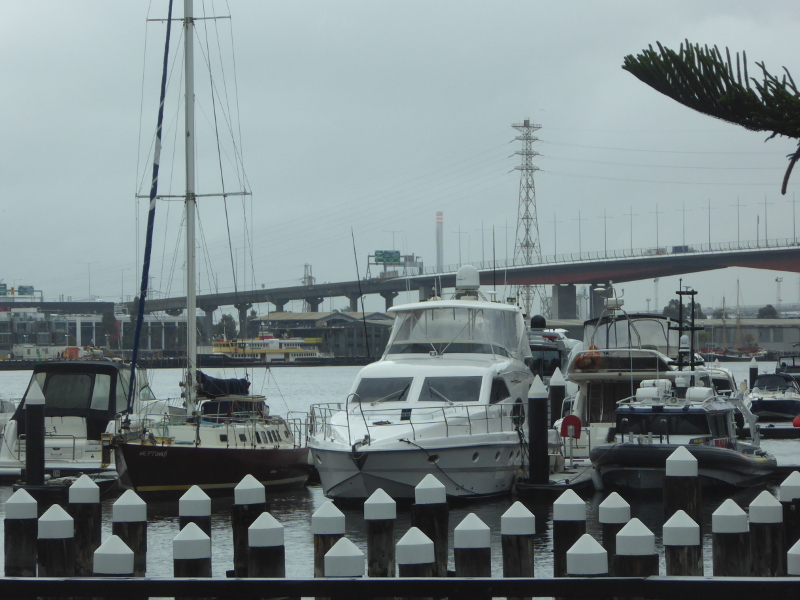
Then we finally hit water, with the big Westgate bridge ahead and central pier (but this is all concreted over so I won’t be rushing to review it for Vintage Victoria). There’s the big observation wheel to the right in Docklands – the only one in the Southern Hemisphere (this is about the only fact I used from tram commentary).
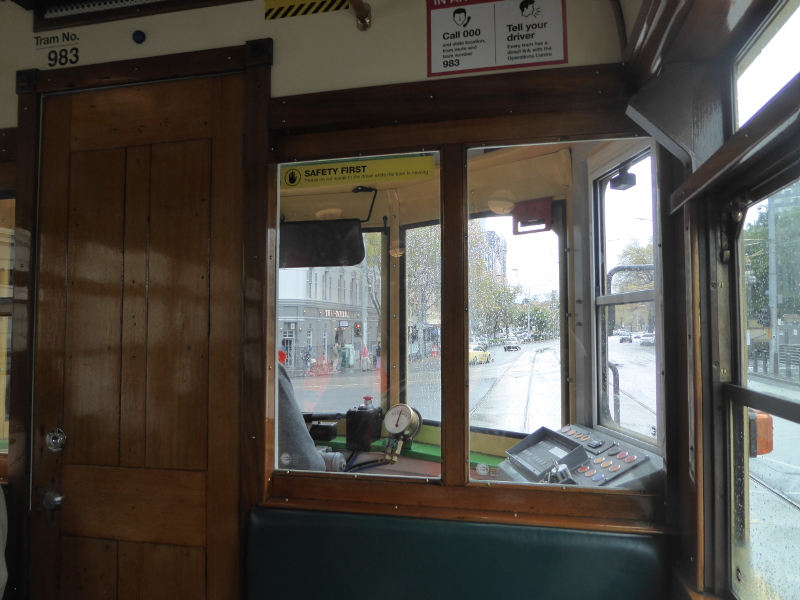
The end of line, on the tail of that Q, had us parked up for a few minutes with the Westgate bridge just ahead of us. The driver switches to the other end and starts to head back to the CBD, back past central pier, and then past the 1917 seamen’s mission building, which is also still used today for its original purpose, as far as I can see.
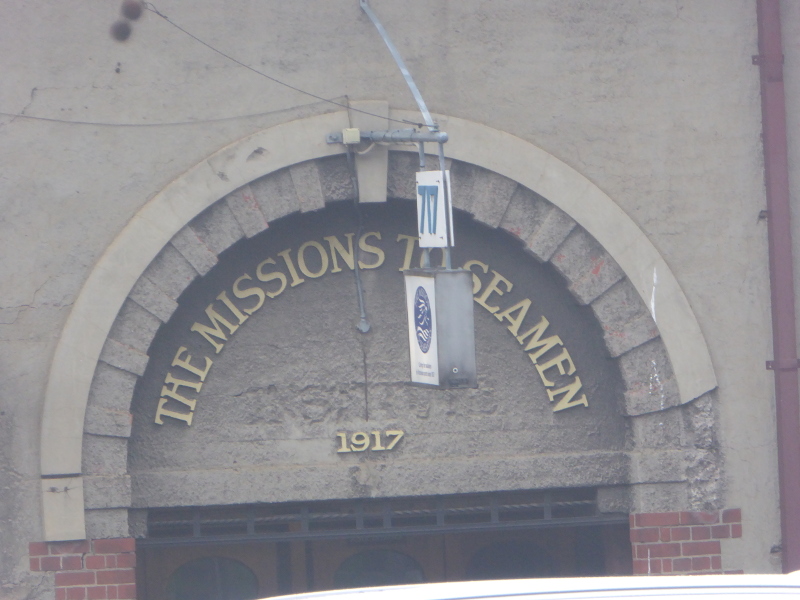
There are a few old warehouses which could no doubt tell a tale or two, but without signage and certainly no commentary on the tram for these, it was hard to know who they belonged to or what they stored in the old days.
Back at Flinders St station and many passengers were staying on – some maybe like me getting some pics missed on that first time around, but others just trying to stay dry on a cold day in Melbourne. Hey sitting it out on a vintage tram – why not?
Practicalities
Free to ride anywhere on the route.
Frequency varies. Was every 12 minutes, but with a lot of trams now away for repair and restoration, it was every half hour anti-clockwise and every hour clockwise on the day I was there.
Disabled access poor – which is why the W-class trams are not more widely used still these days.
For toilets, try those vintage loos I mention if you need a break, or use the more modern facilities at Flinders Street Station
History and stories from the City Circle tram route
Since the City Circle Tram line was only conceived in the 1990s, there isn’t really much history – or any stories that stand out in its short life-span so far.
But I’d still be happy to hear from any others with wonderful memories of riding these vintage trams, or any thoughts on the concept of a free tram service like this one…
Other links and writings on the City Circle tram in Melbourne
Some lovely photos of the City Circle trams on this rail gallery website.
There’s a little bit of history of Melbourne’s trams in general on the Victoria Heritage Database entry on the City Circle trams.
Another English guy’s blog has a nice theme of taking guided tours in different parts of the world. He too was less than impressed with the commentary on the City Circle, but his blog is very readable.
Some educational bodies even use the City Circle vintage trams as an attraction to draw students to Melbourne. This is from the RGIT website.
This ABC Central Victoria story from 2013 tells the tale of the Bendigo workshop restoring the vintage trams that play the City Circle route.
The Age newspaper from 2015 spoke of proposals to cut the City Circle tram service drastically.
The Bendigo Advertiser newspaper also covered the trams restoration story in 2017.
The Rail Express magazine kept us up-to-date on the restoration story in 2018, with news on trams due for return to Melbourne by 2020.
The Vic Government has even published its strategy for ‘retired trams’, with ideas going beyond restoring them to use on the City Circle!
And the Beautiful Altona website shows how these vintage trams can be put to other uses, with stats on the costs involved.
Coffee before the journey or when you get back?
My top tips for coffee near the City Circle tram route are both near the Flinders Street Station stop, where I got on. Cathedral Coffee is always top notch and it’s in the gorgeous Cathedral Arcade, just a short walk up Swanston Street. Or Cup of Truth down in Campbell Arcade, which is probably closer but may close down when those Metro Tunnel works advance into the arcade itself, I’m afraid.


I’m certain the free tourist tram used to be brown in colour not maroon?? When did this change?